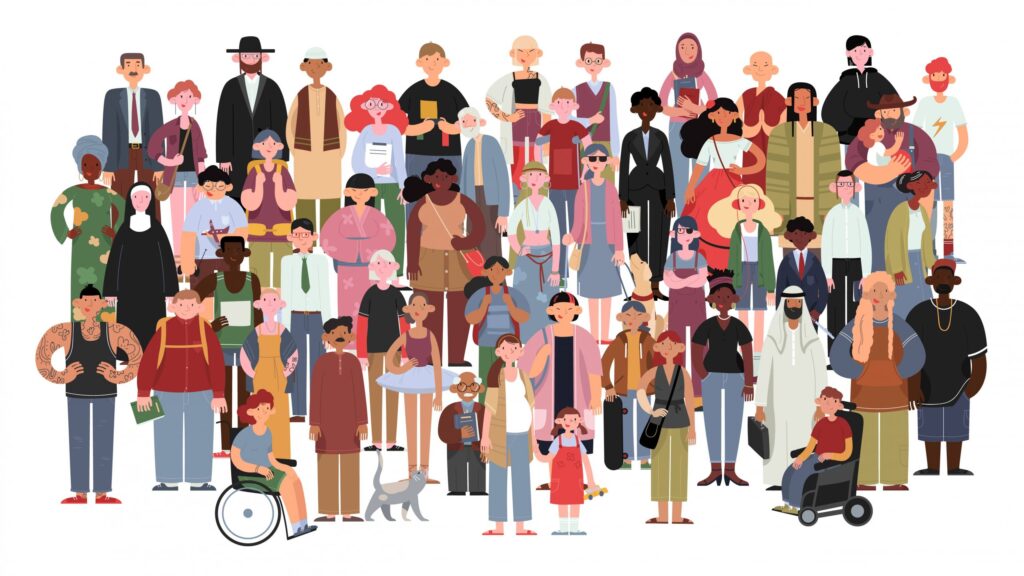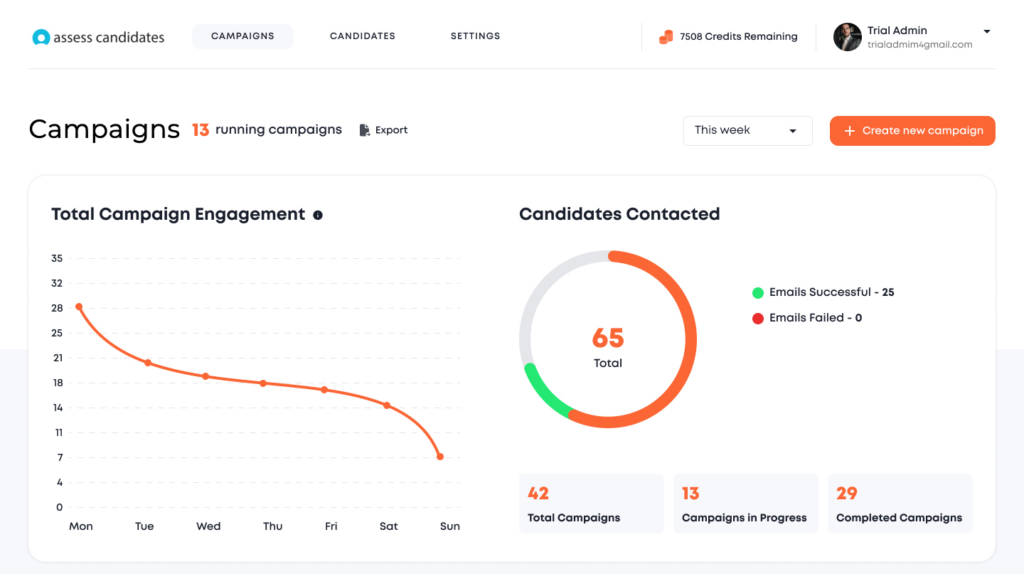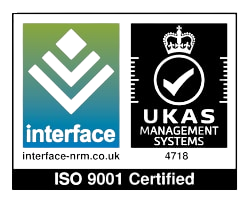Discrimination in Recruitment: Ensuring Fair Practices
Recruitment processes play a vital role in fostering equal employment opportunities, where candidates are evaluated only on their merit, rather than their “Protected Characteristics” (PC) – as defined by the Equality Act 2010. Despite these legal safeguards, discrimination still affects recruitment procedures, resulting in adverse consequences.
In this comprehensive article, we delve into the issue of recruitment discrimination, shedding light on its consequences for hiring teams. We emphasise the critical significance of cultivating fair and inclusive selection processes, eliminating any biases and stereotypes from candidate evaluation.
This guide is a must read for all recruiters and HR professionals. We will explore topics such as combating unconscious bias, understanding the legal aspects of hiring discrimination, and implementing diversity initiatives to promote a discrimination-free hiring environment.
Contents:
- What is adverse impact in recruitment?
- What strategies can combat discrimination in recruitment?
- How does legislation impact fair hiring?
- What are examples of companies that successfully changed their recruitment processes to ensure fair hiring?
- How can Assess Candidates solutions help you eliminate discrimination in your recruitment?
- FAQs and Glossary of Terms
1. What is adverse impact in recruitment?
Adverse impact in recruitment refers to the disproportionate and unfavourable outcomes experienced by certain groups of candidates during the hiring process. This phenomenon can occur when seemingly neutral recruitment practices inadvertently discriminate against individuals based on their “Protected Characteristics” (PC) as defined by the Equality Act 2010. What does this mean for hiring teams?
What are examples of characteristics that may be affected by adverse impact?
The characteristics that may have adverse impact in recruitment include:
- race
- gender
- age
- disability
- religion
- sexual orientation

Adverse impact manifests as differences in the hiring outcomes among different demographic groups. For instance, if a recruitment process unintentionally favours one group over another, it leads to a lack of diversity within the workforce, perpetuating inequality.
Did you know that organisations in the top quartile for gender diversity have a 25% more likelihood of financially outperforming their peers?
Not only does adverse impact affect candidates who face discrimination but it also hampers organisational effectiveness and innovation by limiting the diversity of thought and perspectives within the workplace.
Assess candidates with tools designed to avoid adverse impact. Hire For Free
2. What strategies can combat discrimination in recruitment?
Understanding adverse impact is one thing, but to mitigate it companies must proactively address biases and discrimination within their recruitment processes. As a recruiter, you should be familiar with the following strategies.
Top 3 strategies to combat discrimination in recruitment
- Implementing fair and inclusive hiring practices: Look for tools that actively factor in adverse impact and take steps to address this.
- Raising awareness about unconscious bias: Educate HR and others to understand how the unconscious may affect how we make hiring decisions. Awareness will help others be more mindful and begin the necessary steps for change.
- Evaluating recruitment strategies to ensure they align with the goal of promoting diversity and equal opportunity in the workforce: A top-down approach is needed, where HR are aligned with the needs of the organisation to ensure tackling discrimination is on everybody’s agenda.
Combatting discrimination in recruitment requires an approach incorporating various strategies to ensure fairness, equal opportunity, and diversity in the hiring process.
Let’s now cover specific ways this can be achieved in your recruitment teams.

12 Ways to Prevent Adverse Impact in Recruitment
Here are some effective ways that your hiring team needs to be aware of to prevent adverse impact from reducing the diversity and quality of your hires.
- Blind Recruitment: Remove personally identifiable information such as names, gender or addresses from initial application materials to minimise unconscious bias.
A field experiment revealed significant racial discrimination in callback rates for job applicants. The study found that resumes with “white-sounding” names received 50% more callbacks than identical resumes with “African-American-sounding” names.
National Bureau of Economic Research (NBER)
- Diverse Interview Panels: Form diverse interview panels to reduce the impact of individual biases and promote a more inclusive assessment.
- Training and Awareness: Provide training to recruitment teams to raise awareness about unconscious bias and discrimination issues.
- Standardised Cognitive Assessments and Interviews: Use a set of standardised assessments and interview questions as your evaluation criteria to ensure consistent evaluation of candidates.
- Diversity Initiatives: Develop and implement diversity and inclusion initiatives to actively attract candidates from underrepresented groups.
- Regular Audits: Conduct regular audits of recruitment processes to identify and rectify potential discriminatory practices.
- Legal Compliance: Stay informed about employment discrimination laws and ensure strict compliance with them.
- Feedback Mechanisms: Establish feedback mechanisms for candidates to report any discriminatory experiences during the recruitment process.
- Inclusive Language: Use inclusive language in job postings and communications to appeal to a broader range of candidates.
A recent study found that 46% of LGBTQ+ workers reported experiencing some form of discrimination at work. This discrimination can extend to the recruitment process, making it challenging for LGBTQ+ job applicants to secure employment without facing bias or prejudice.
Human Rights Campaign Foundation (2020)
- Promote Diversity at Leadership Levels: Encourage diversity at leadership levels to set an example for the entire organisation.
- Continuous Improvement: Continuously assess and refine recruitment practices based on feedback and outcomes.
- Transparency: Maintain transparency in the recruitment process, informing candidates about the steps taken to ensure fairness.
By implementing these strategies, your hiring team can create a more equal and inclusive recruitment process, ultimately benefiting both candidates and the organisation itself by fostering a diverse and talented workforce.
Did you know that inclusive teams are over 35% more productive.
3. How does legislation impact fair hiring?
Aside from business aspects of fair hiring, legislation also plays an important role in shaping fair hiring practices by providing a legal framework that mandates equal opportunities and prohibits discrimination in the workplace.

5 examples of how legislation impacts the hiring process
In the context of recruitment, several key aspects of legislation impact fair hiring. You should be aware of the local equivalents based on where you conduct your hiring activities. Here are 5 examples:
- Equality Act 2010 (UK): This landmark legislation in the UK defines “Protected Characteristics” and explicitly prohibits discrimination based on these characteristics during recruitment. It ensures that candidates are evaluated solely on merit, regardless of factors such as age, gender, race, disability, religion, sexual orientation, and more.
A recent report revealed age-related discrimination in the tech industry. The study found that tech workers aged 40 and older were 60% less likely to be contacted by recruiters compared to their younger counterparts. This indicates challenges older workers face in tech recruitment.
Visier Insights
- Anti-Discrimination Laws (Global): Many countries have their own anti-discrimination laws that apply to the recruitment process. These laws vary by jurisdiction but generally aim to prevent discrimination and promote equal employment opportunities.
- Affirmative Action (US): In the United States, affirmative action policies are designed to address historical discrimination and promote diversity in the workplace, including during recruitment. These policies often involve setting goals for the representation of underrepresented groups.
- Reporting Requirements: Legislation may require organisations to report on their recruitment practices, making them more transparent and accountable for ensuring fairness.
- Legal Remedies: Legislation provides legal remedies for candidates who believe they have faced discrimination during the recruitment process, including the option to file complaints and seek compensation.
Organisations in the top quartile for ethnic diversity have a 36% more likelihood of financial outperformance.
Use Assess Candidates for a fair-opportunity recruitment campaign. View Plans
4. What are examples of companies that successfully changed their recruitment processes to ensure fair hiring?
Safeguarding recruitment from discrimination is becoming a top priority for organisations of all sizes. Take a look at the examples of these companies which showcase diverse strategies in their efforts to eliminate bias from their recruitment processes, demonstrating that there are various approaches to achieving more inclusive hiring practices.
In a recent survey 3 out of 4 companies rated diversity and inclusion as a priority within their organisation.
Beamery
5 Companies who successfully use fair hiring practices:
- Airbnb: Airbnb recognized that its platform had issues with discrimination in host and guest selection. They revamped their recruitment process to prioritise diversity and inclusion. This included anonymous resume screening and implementing tools to reduce bias in host and guest interactions. The company has since made significant progress in creating a more inclusive community.
- Accenture: Accenture employs a blind recruitment process, where applicant names, gender, and other identifying information are concealed during the initial stages of selection. This approach ensures that candidates are assessed solely on their skills and qualifications, reducing potential bias.
- PwC: PricewaterhouseCoopers (PwC) introduced the “blind audition” approach in their recruitment process. This means candidates are assigned a random number and evaluated based on their performance in a skills-based assessment, without any information about their background, education, or work history.
- Symantec: Symantec’s recruitment process incorporates a commitment to gender diversity. They have adopted gender-neutral language in job descriptions, ensuring that they appeal to a wider pool of candidates. This simple but effective change has contributed to a more inclusive hiring environment.
- Microsoft: Microsoft has embraced the concept of diversity and inclusion as core principles of its hiring process. They employ diverse interview panels, including individuals from various backgrounds, to minimise bias and subjectivity in candidate assessment.
5. How can Assess Candidates solutions help you eliminate discrimination in your recruitment?
Discover a brighter future for your recruitment process with Assess Candidates solutions. Our cutting-edge tools and strategies are specifically designed to eliminate discrimination and promote fair hiring practices.
3 Ways Assess Candidates helps to tackle discrimination
- Consistency – All candidates receive the same experience.
- Low cut-offs – We use low cut-offs by default to ensure minimal adverse impact – these can be customised as needed by the recruiter.
- Automation – Automation ensures minimal involvement from the recruiter and so less likelihood of discrimination taking place.
All of these ensure that every candidate is evaluated solely on merit.

By partnering with us, you can stay in compliance with employment discrimination laws while fostering a diverse and inclusive workplace culture. Unlock the full potential of your talent pool – join us in reshaping the future of fair and equal opportunity hiring!
Practical example of how Assess Candidates will help your company combat discrimination in recruitment.
Problem:
Your recruiters designed a blind recruitment, however there is an evident lack of diverse candidates who reach the interview stage.
Assess Candidates solution:
It is very likely that whilst all demographic data is hidden in the first part of your hiring process, the choice of a CV screening method or assessment tools is still inadvertently biassed. Your company might be evaluating competencies that favour one demographic group over another – for example, by the rigorous testing of English language skills in place of a more reliable verbal reasoning assessment with low cut-off scores, complemented by numerical reasoning tests. Our experts will help you evaluate each step of your recruitment process to ensure all candidates get a fair chance to reach the final stages of recruitment.
6. FAQS and Glossary of Terms
Discrimination in Recruitment FAQ
- What is the adverse impact in recruitment?
- Adverse impact in recruitment refers to unfair outcomes affecting certain candidate groups when it comes to hiring decisions.
- How can legislation impact fair hiring?
- Legislation mandates equal opportunities and prohibits discrimination in recruitment processes. This means all companies have an obligation to ensure their hiring practices do not inadvertently affect any individuals.
- How can I ensure fair hiring practices?
- To ensure your hiring practices are fair, you need to make sure all parts of the process give every candidate an equal chance of success – meaning employing diverse interview panels, blind recruitment, and awareness of unconscious bias in your recruiting staff.
- Why is diversity in hiring important?
- In a nutshell, diversity of your workforce fosters innovation, better decision-making, and reflects a broader society.
- What are some common sources of bias in the recruitment process?
- Bias can emerge from various aspects, including resume screening, interview questions, personal connections, or even the choice of recruitment channels. Being aware of these potential sources of bias is crucial for fair hiring.
- How can companies promote diversity and inclusion beyond the hiring process?
- Promoting diversity and inclusion extends beyond recruitment. It involves creating an inclusive workplace culture, offering diversity training, and implementing inclusive policies and practices that support employees of all backgrounds and experiences.
Glossary of Terms
- Protected Characteristics: Traits like race, gender, age, etc., protected from discrimination.
- Blind Recruitment: Removing personal info to reduce unconscious bias.
- Affirmative Action: Policies to address past discrimination and promote diversity.
